The curvaceous and holey Henry Moores that dotted the landscape of my pre-Banksy UK youth, were to me, the face (and monolithic body) of British public art. Moore’s magnificent-but-ubiquitous abstractions of the female form seemed to multiply in the moonlight of the night time parks, and then with bonnie bronze babies seated on their patinaed knees, bask in the warmth of the municipal sun.
Those now-fondly-remembered ladies, with-or-without babies, helped instill in me a lifelong appreciation of the usually-well-intentioned phenomenon of public art. So it is with a glad curiosity that I set out on a sunny Tokyo Saturday to see what magic the capital can offer in the form of gratis-to-gaze-upon marble, metal and bolted-together oddities.
First stop, the high-rise hotel swank of Nishi-Shinjuku, where in the shadow of the i-Land Tower, work by two pop-art heavyweights has been adding some primary color cheer to the leafy-but-gray surroundings since the mid-1990s.
Love by Robert Indiana
Robert Indiana’s Love is a many-splendored ton of metal and densely pigmented gloss paint consisting of the letters L, O, V, and E stacked in a pleasingly cubic form. Working from his original 2D design (a popular Museum of Modern Art Christmas card), Indiana showed not just typographical nous, but also keen business acumen, by convincing cities around the world to fork out for his four-letter word in monumental sculptural form.
In the rising heat of this summer morning, Tokyo’s Love sits under gently swaying trees, attracting affectionate glances from locals and lending its pop-art-pizzaz to the photographs of tourists who grinningly wedge themselves between its seriffed capitals. The colors, which are still as bold as ever, are in places scuffed and scratched, complementing the work’s clean lines with an agreeable sense of well-loved longevity.
Tokyo Brushstrokes I and II by Roy Lichtenstein
Just around the corner are Roy Lichtenstein’s Tokyo Brushstrokes I and II. Here, the artist’s use and reuse of comic book imagery reaches new heights, as intertwining depictions of fat glistening paint-smears are first given his familiar flattened halftone treatment, then brought to massive, industrially-fabricated, life. With a relatively easy-to-fix irony, the once eye-popping colors of both sculptures are currently quite faded. Still, they don’t fail to impress, reaching up in a twisting-turning confusion of undulating splatter and towering over the passing cars and pedestrians.
The Eye of Shinjuku by Yoshiko Miyashita
Onwards to the rinky-dink Showa-era charms of Shinjuku Station’s west gate underpass, where Yoshiko Miyashita’s The Eye of Shinjuku has gazed out at over half a century of commuter mayhem, stress, joy, and debauchery, unblinking since its installation in the heady days of 1969. Miyashita’s silent psychedelic witness to the fortunes of the millions who pass daily through the world’s busiest railway station is formed from satisfyingly thick and rippled clear acrylic and fitted with a spinning pupil and lights that cut through the gloom of its surroundings.
Unfortunately, on this particular afternoon, these automated features are not in evidence, perhaps as a result of nearby construction. I have an inkling that the work’s ongoing existence may soon be threatened by the already-underway redevelopment of this area. But for the time being, at least, the eye makes its haunting and history-filled presence known.
Maman by Louise Bourgeois
Emerging, after a short stint on the Oedo Line, from the bowels of the earth (which are listed on maps as Roppongi station), the pilgrimage leads next to Roppongi Hills and a visit to Maman, Louise Bourgeois’ spectacular nine-meter arachnid. The sculpture, which is also replicated in cities around the world, was intended as a tribute to Bourgeois’ mother, who worked as a weaver. Knowledge of the artist’s touching intentions does cast the otherwise potentially unsettling bronze behemoth in a friendlier light, and she certainly holds no fear for the happy children who, on this now-sweltering Roppongi afternoon, run between and twirl around the spindly-but-strong legs of Bourgeois’ Maman.
Ni-Tele Really Big Clock by Hayao Miyazaki
Next, to Shiodome, where fans of Studio Ghibli (and/or oversized timepieces) will be delighted by the Ni-Tele Really Big Clock, designed in intricate detail by pure-hearted animation genius Hayao Miyazaki and built by Studio Ghibli collaborator Kunio Shachimaru. Located on the side of Nippon Television’s headquarters, Miyazaki’s clock is a colossal 18-meter steampunk fantasy in copper and steel that shares a similar aesthetic to his 2004 movie Howl’s Moving Castle.
At selected times throughout the day, the charming lantern-headed figures that inhabit the clock are animated in a bells-and-whistles striking of the hour. Having arrived early for a bout of this mechanized whimsy, I am dismayed to find that the day’s ever-rising humidity has given way to the first of many ball-bearing sized raindrops, making a 20-minute wait for the show sans umbrella a less attractive proposition than it would otherwise have been. With apologies to Miyazaki-san, I make my way to my next appointment, which is waiting for me underground.
Subterranean Sanctuary of Ginza Station
Taking shelter in the tunnels of Ginza Station, I find something of a public art treasure trove. In addition to the booth-like Metro Ginza Gallery, which shows work by a regularly changing roster of contemporary artists, there is the Elysian stained glass beauty of Ikuo Hirayama’s Rakuen and the venerably handsome sculpture Mercury by Kasaoki Takao.
Crystal of Light by Tokujin Yoshioka
There is one work, however, that seems irresistible to the eyes of the sheltering throng. Crystal of Light by Tokujin Yoshioka is a dazzling arrangement of 636 crystal glasses, specially cut to send light dancing in every direction. The work’s twinkling charms draw streams of passersby, and every few seconds, another smiling selfie is taken against the glamorous backdrop. Children press their faces close to the crystals, hypnotized by the reflected rays that dart from each angled facet, unwilling to leave in a hurry.
With the last of Yoshioka’s glitter in the corner of my eyes, I treat myself to a konbini umbrella and head up to the surface to check on the weather.
Young Clock Tower by Taro Okamoto
Armageddon awaits. The rain descends in solid sheets, and ominous rumbles are closing in. Putting my new umbrella through its paces, I make my way to a deserted Sukiyabashi Park where Taro Okamoto’s Young Clock Tower is just, but only just, visible through the squall. The mustachioed clock face atop Okamoto’s gold and silver tentacled creation (a precursor to his immortal Tower of the Sun) is suddenly picked out by a terrifyingly close flash of lightning, and I realize that although there was more I wanted to see, my public art odyssey is over for the day.
Later, in a nearby izakaya, with the brutish weather locked safely outside, glasses are raised. First to the dear departed Henry Moore, and then to the easy-to-come-by culture of Japan’s art-filled capital. Making peace with the rain-soaked truncation of my adventure in public art and thinking ahead to its hoped-for recommencement, an encouraging thought occurs: like the happy-snapping visitors to Indiana’s Love, I have only scratched the surface.
Feature image: Maarten Heerlien
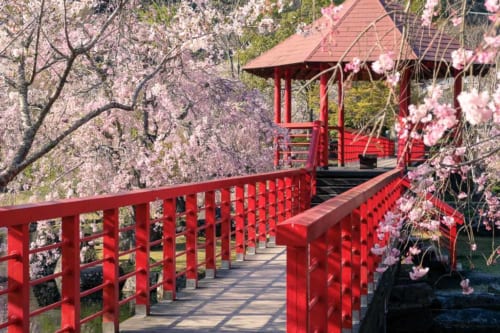
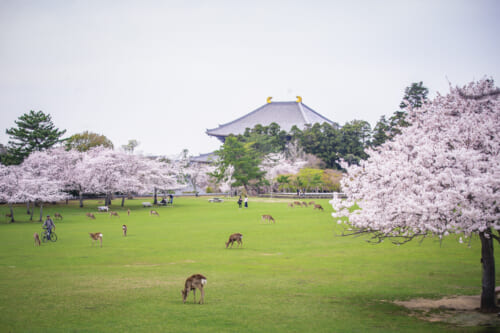

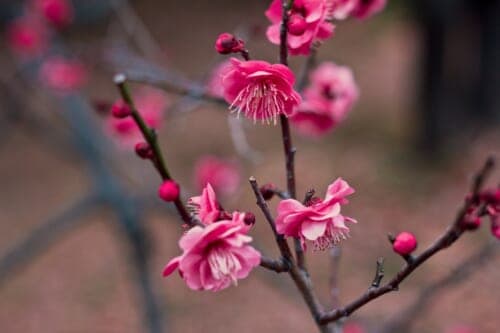
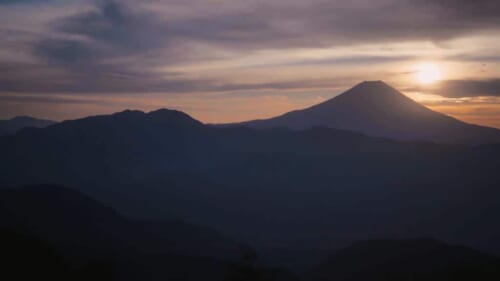

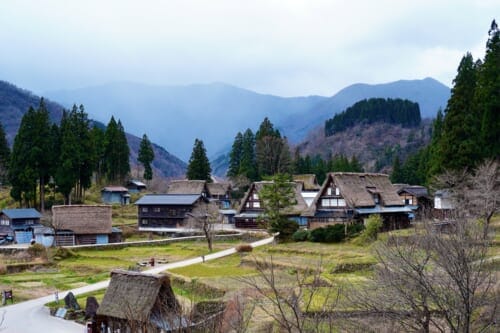
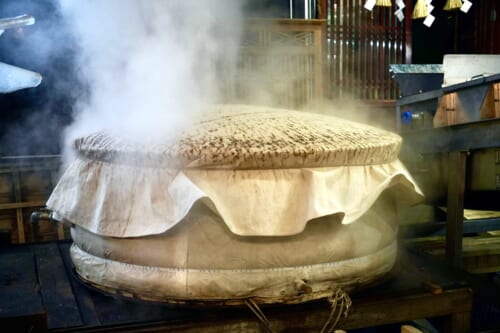
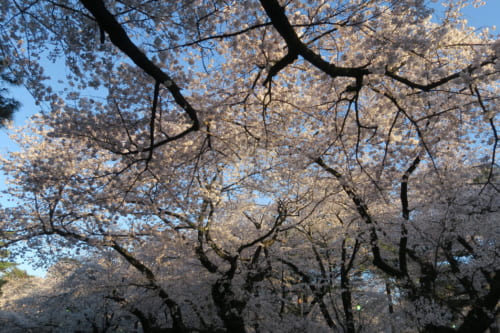
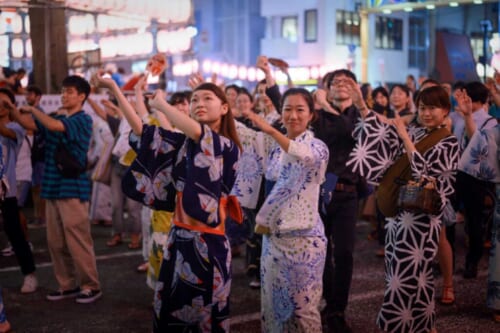


No Comments yet!